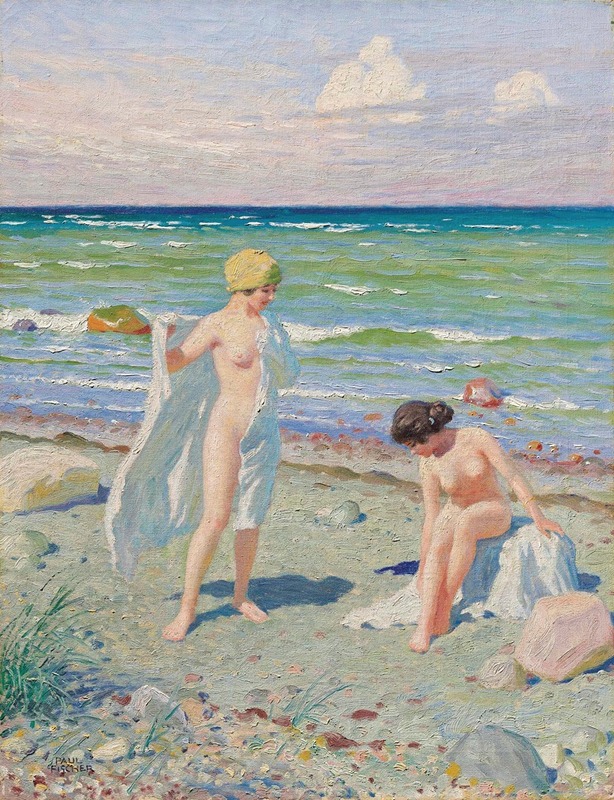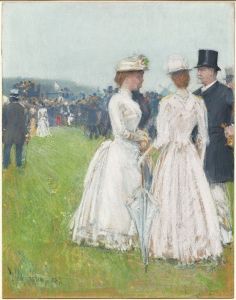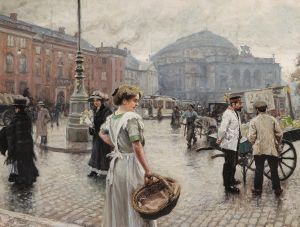
After the swim
A hand-painted replica of Paul Fischer’s masterpiece After the swim, meticulously crafted by professional artists to capture the true essence of the original. Each piece is created with museum-quality canvas and rare mineral pigments, carefully painted by experienced artists with delicate brushstrokes and rich, layered colors to perfectly recreate the texture of the original artwork. Unlike machine-printed reproductions, this hand-painted version brings the painting to life, infused with the artist’s emotions and skill in every stroke. Whether for personal collection or home decoration, it instantly elevates the artistic atmosphere of any space.
Paul Fischer was a Danish painter known for his depictions of everyday life in Denmark, particularly in Copenhagen. His works often captured the essence of the late 19th and early 20th centuries, showcasing scenes of urban life, leisure, and the changing social dynamics of the time. One of his notable works is "After the Swim," which exemplifies his style and thematic focus.
"After the Swim" is a painting that reflects Fischer's interest in leisure activities and the social life of his era. The painting depicts a group of people, likely enjoying a moment of relaxation and camaraderie after swimming. Fischer's attention to detail and his ability to capture the nuances of human interaction are evident in this work. The figures in the painting are portrayed with a sense of realism and vitality, characteristic of Fischer's approach to his subjects.
Fischer was born in Copenhagen in 1860 and was part of a family with a strong artistic background. He began his artistic education at the Royal Danish Academy of Fine Arts but left early to pursue a more practical approach to painting. His career took off in the 1880s, and he became well-known for his ability to capture the vibrancy of city life. Fischer's works often featured the bustling streets of Copenhagen, elegant women, and scenes of leisure, reflecting the modernity and social changes of the time.
"After the Swim" fits within this context, as it portrays a moment of leisure that would have been familiar to the urban middle class of the period. The painting likely captures a scene from a beach or a bathing area, common social spaces where people gathered for recreation. Fischer's use of light and color in the painting helps convey a sense of warmth and relaxation, inviting viewers to share in the depicted moment.
Throughout his career, Fischer was influenced by the Impressionist movement, which is evident in his use of light and his focus on capturing fleeting moments. However, he maintained a distinct style that balanced realism with impressionistic elements. This approach allowed him to create works that were both detailed and evocative, capturing the spirit of his time.
Fischer's paintings, including "After the Swim," are appreciated for their historical value as well as their artistic merit. They offer a window into the social and cultural life of Denmark during a period of significant change. His ability to depict everyday scenes with authenticity and charm has earned him a lasting place in Danish art history.
Today, Fischer's works are held in various collections, both in Denmark and internationally. They continue to be studied and admired for their contribution to the understanding of Danish culture and the development of modern art in the region. "After the Swim" remains a testament to Fischer's skill in capturing the essence of leisure and the human experience.


















